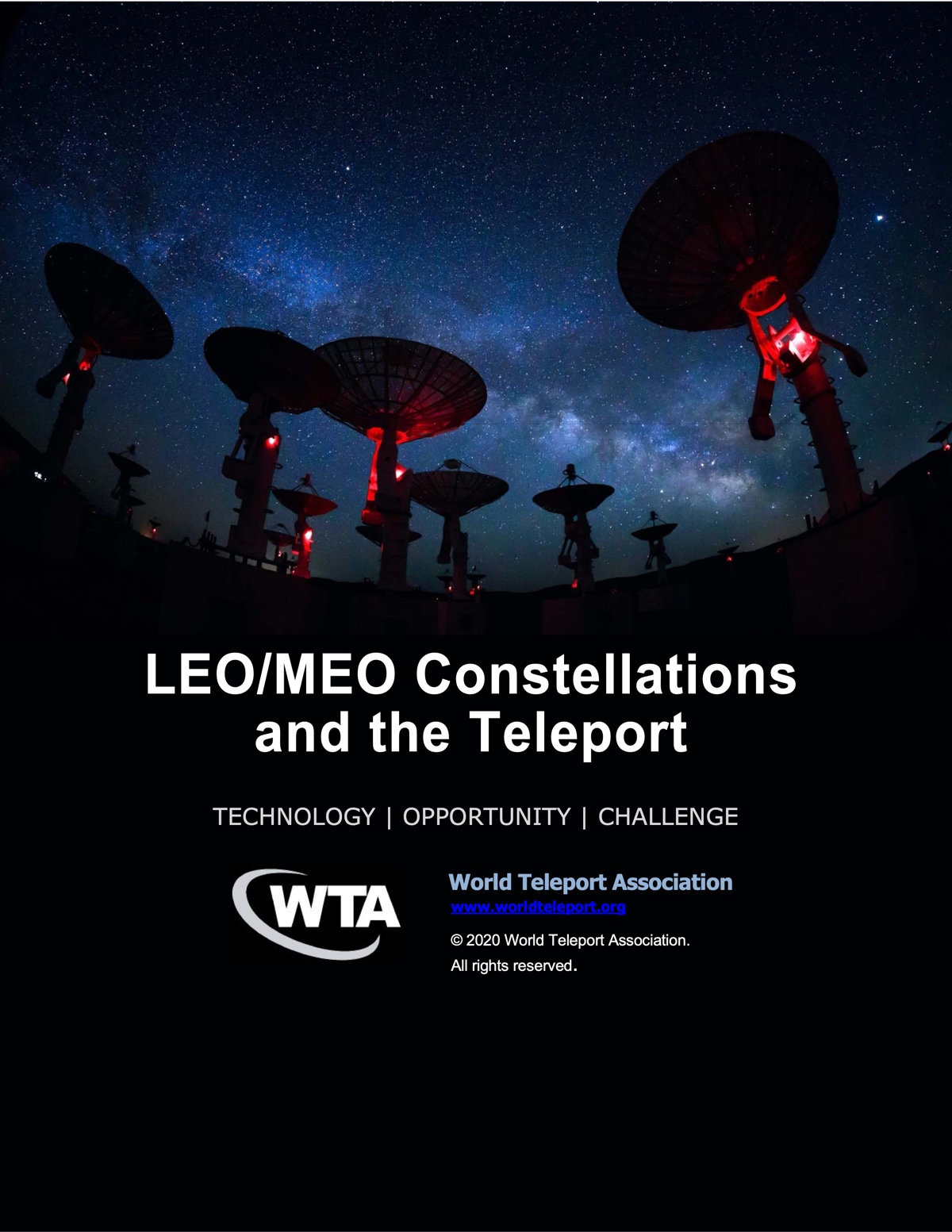Most of the attention surrounding the early success of the SES Networks’ MEO constellation and the pending arrival of LEO constellations has focused skyward. It is all about the satellites and their orbits, interference with GEO and the economic potential and risks of delivering global coverage to a planet that is 70% covered by water.
An equally vital question, however, is how the established ground services industry – aka, teleports – will interface with this new capacity. It reminds me of a joke a friend once made about the legalization of marijuana. When it finally happens, we will have ready-made distribution platforms ready to go in every city and town.
They’re called drug stores.
For a variety of reasons, it isn’t working out that way. So, for MEO and LEO, the question is whether they will take proper advantage of a network of facilities already in place or try to re-invent the wheel?
LEO/MEO Constellations and the Teleport
 In January, World Teleport Association published LEO/MEO Constellations and the Teleport, based on interviews with satellite operators, teleport operators and technology vendors. In public, most of the planned LEO constellations have been tight-lipped about their go-to-market strategies. Of the five systems covered in the report, only two have revealed their plans. One is a negative example: Kepler Communications operates the single teleport required to start its store-and-forward service and also sells the service directly. The positive example is OneWeb, which is deeply engaged with teleport operators, seeking gateways for its network and resale partners for its service. As a GEO operator, SES has worked with teleports for decades and there are occasional press reports of companies like Speedcast integrating MEO services into customer solutions. SES is also launching discussions with teleport operators about support for testing the new mPOWER spacecraft and establishing gateways able to handle their enormous data volumes.
In January, World Teleport Association published LEO/MEO Constellations and the Teleport, based on interviews with satellite operators, teleport operators and technology vendors. In public, most of the planned LEO constellations have been tight-lipped about their go-to-market strategies. Of the five systems covered in the report, only two have revealed their plans. One is a negative example: Kepler Communications operates the single teleport required to start its store-and-forward service and also sells the service directly. The positive example is OneWeb, which is deeply engaged with teleport operators, seeking gateways for its network and resale partners for its service. As a GEO operator, SES has worked with teleports for decades and there are occasional press reports of companies like Speedcast integrating MEO services into customer solutions. SES is also launching discussions with teleport operators about support for testing the new mPOWER spacecraft and establishing gateways able to handle their enormous data volumes.
Physically, a teleport supporting a LEO constellation will look very different. Instead of focusing on the equatorial arc, it must cover the full sky with many more antennas. Other requirements include frequency clearance, particularly anywhere near a 5G transmitter. In the case of Ka-band constellations, climate becomes an issue, because torrential rain is a non-starter for gateways.
Antennas are the most visible part of the infrastructure, but the most critical element is the data center. Meeting the requirement means having the rack space available for all the incoming equipment and the power and cooling needed to support it. That can demand significant upgrades to power and cooling, which may involve considerable investment.
One LEO executive predicted that his spacecraft will not be able to deliver bandwidth for a lower price than GEOs, but that the lower latency of LEOs will command a higher price point for the right applications. It will also be several years before the LEO constellations are fully deployed, which means that they will depend for a time on roaming between LEO and GEO. Once those complex relationships are in place, they may prove enduring because the combination delivers the best price/performance to customers. It is already central to the SES Networks MEO business model.
Technology executives were unanimous in seeing strong business opportunities from the new constellations, whether it is for more antennas, power systems, monitoring technology or connectivity. One tech company has 40 to 50 engineers at work on designs – but is still unsure exactly who the buyer will be and how many units they are likely to buy.
Opportunities and Risks
From the limited information available so far, it appears that the LEO and MEO constellations will offer teleport operators the following opportunities:
1. Teleports are already acting as “landlords,” selling the colocation of ground segment to the LEO operator, based on geographic location, antenna space with the right look angles and high-quality infrastructure.
2. With collocated technology on premise, teleport operators will provide first-line trouble-shooting and maintenance on that technology.
3. As LEO constellations develop major customers for their services, teleport operators could become their regional installation and service organizations.
4. Where the constellation’s business model permits, teleport operators will resell capacity and bundle it into value-added solutions, just as they do with GEO capacity today.
Every opportunity, however, comes with risk. If the NGSO constellations prove enormously successful, it may jeopardize the GEO constellations that have long been the foundation of satellite communications. The risk is difficult to quantify and almost impossible to defend against. On the other hand, it is clear that not every LEO constellation will succeed. Teleport operators that co-invest in ground station infrastructure for new constellations risk seeing that investment stranded by the failure or one or more LEO operators. Teleport operators need to consider carefully the financial soundness of the operators they support and negotiate contracts that provide them with the maximum protection against downside risk.
One of the technology providers we interviewed was particularly enthusiastic about the changing landscape: “Our team has been in hundreds of teleports around the world and over the years we’ve watched signal quality change. We’ve watched the number of signals coming in change and the frequencies and bandwidth change. We’ve seen new designs in redundancy and use of RF over fiber. We have responded to it all with solutions. This won’t be the end of the teleport as we know it – it will just be a paradigm shift. It’s great to have the LEOs remind us that satellite remains a powerful and effective way to communicate around the world!”
The LEO/MEO Constellations and the Teleport report is available for free to WTA members and for sale to non-members at https://www.worldteleport.org/store/ViewProduct.aspx?id=15527493.
--------------------------------------------------------
 Robert Bell is the executive director of the World Teleport Association (www.worldteleport.org), which conducts research into the teleport and satellite industry and offers a Teleport Certification program to service providers. He can be reached at rbell@worldteleport.org
Robert Bell is the executive director of the World Teleport Association (www.worldteleport.org), which conducts research into the teleport and satellite industry and offers a Teleport Certification program to service providers. He can be reached at rbell@worldteleport.org





